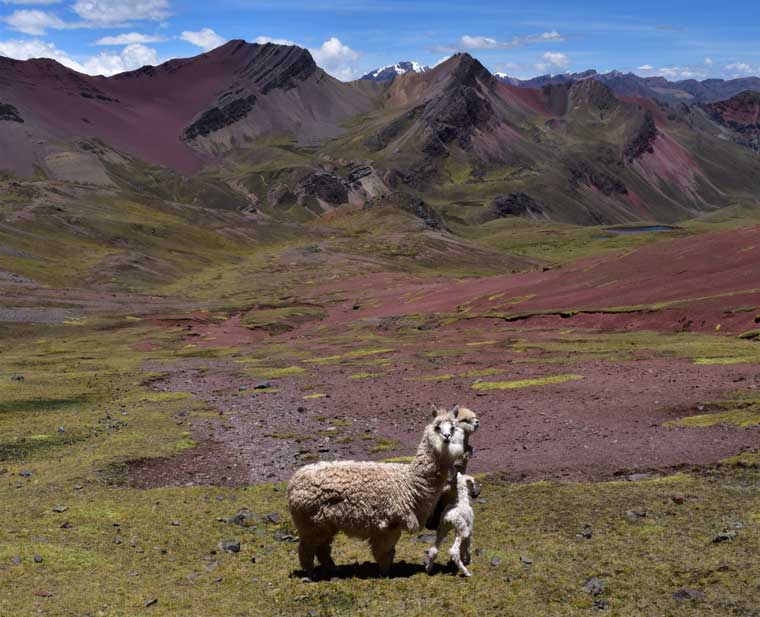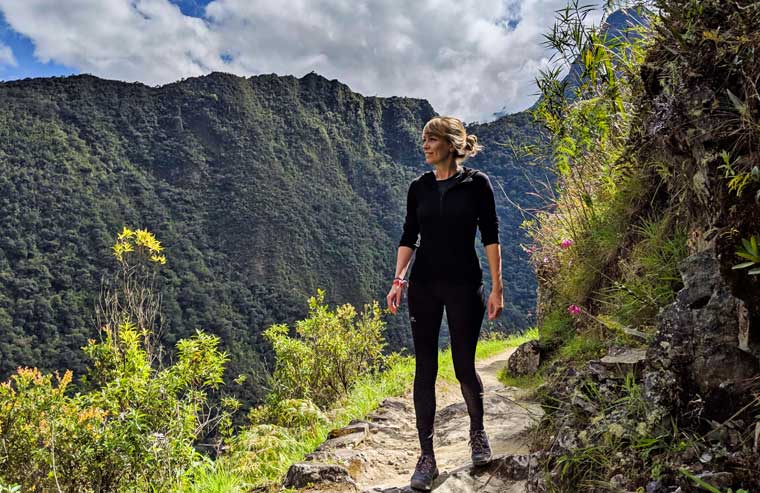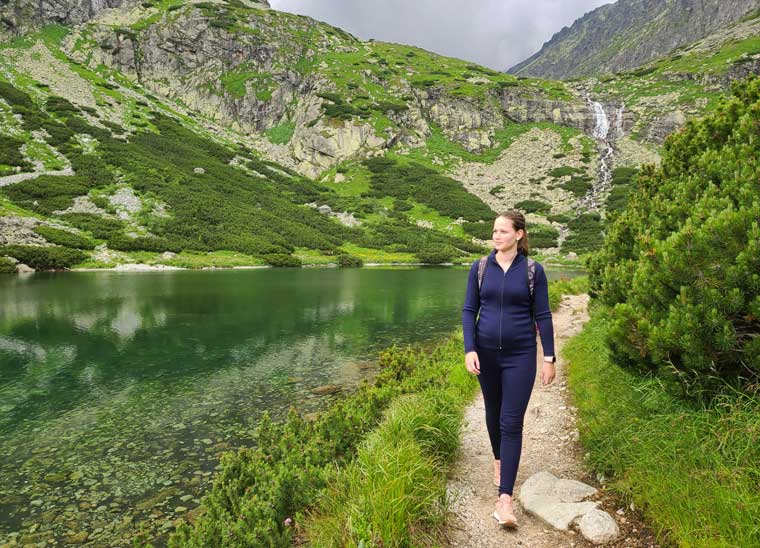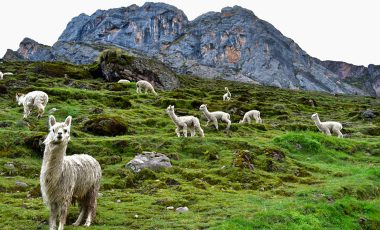Long before the inception of microfleece and polypropylene base layers, explorers were using wool to keep themselves warm. Wool is incredible at retaining heat, so adventurers covered themselves in it – from woollen long johns to that thick wooly jumper – for polar explorations and attempts on the world’s highest summits. But traditional wool clothing is bulky, often feels itchy and takes forever to dry once wet, leaving room for super lightweight, quick-drying synthetics to take over. However, wool has really been making a comeback in the last decade or so, with merino wool becoming the fibre of choice for outdoor enthusiasts looking for better performance clothing. Merino isn’t the only high-performance natural fibre out there though; while it’s not very well known as a technical fibre, it turns out that alpaca wool is something of a hidden gem.
- Why choose alpaca wool?
- The key benefits of alpaca wool
- Alpaca vs Merino
- Is alpaca wool really that great?
- Alpaca outdoor clothing

Why choose alpaca wool?
When you think about alpaca clothing, you probably think of beautiful soft scarves and ponchos, more suitable for a city break than a trip to the mountains. But a closer look at the properties of alpaca wool shows that it is one of the highest performing fibres around. Like merino wool, alpaca is made of keratin protein fibres, which have been shown to function very well in harsh conditions. Additionally, alpaca wool is unique in that its fibres are medullated – in layman’s terms, sections of the fibre have less dense cores – which gives it an extra performance boost.
The key benefits of alpaca wool
Alpaca keeps you warm in the cold and cool in the heat. Like other types of wool, alpaca fibres have a natural curvature to them creating air-pockets within the weave. These air pockets help with thermal regulation across a range of temperatures. Additionally, the medullated cores mean that alpaca wool is extra cozy and extra cool!
Natural odour resistance and antibacterial properties. Synthetic fibres have a reputation for being stinky and manufacturers have come up with treatments to solve that, but alpaca wool doesn’t need any help in this department. It repels bacteria naturally, meaning it is odour-free even after heavy use. Since you can wear alpaca for longer, one alpaca wool shirt can replace two or three synthetic or cotton ones.
Alpaca wool is breathable and dries quickly. Alpaca wool is perfect as a sweat-wicking layer as the fibres absorb sweat from your skin and move it outwards, meaning you’ll feel dry and fresh even after a hot, steep climb. When it does get wet, alpaca wool dries quicker than any other natural fibre.
Light but highly durable. Alpaca fibres have high tensile strength and are quite stretchy, so they are less likely to break during production or when knitted into your alpaca wool base layer. The “semi-hollow” structure of alpaca also makes it extra light, so alpaca wool mid layers are highly packable and perfect for keeping you warm around camp or as an extra layer on the airplane.
Environmentally friendly. Alpacas thrive when roaming semi-free (they are usually corralled at night for safety) at high altitudes in their natural habitat: the Peruvian Andes mountains. Alpaca wool is a renewable fibre as it grows back yearly without much outside influence and it biodegrades when thrown away. As a bonus, alpaca dung is used by farmers as fertiliser and cooking fuel; conveniently alpacas tend to use common dung piles, making it really easy to collect!

Alpaca vs Merino
Everything mentioned above can also be applied to merino wool, so why should you choose alpaca? In short:alpaca does everything merino does, but better. The unique, partial medullation of alpaca wool fibres means that an alpaca garment is generally lighter, can wick more moisture, dry more quickly, retain more heat and even keep the wearer cooler than its merino counterpart.
While merino wool is lauded for being eco-friendly, a big difference is where the animals are farmed. If you buy Peruvian alpaca wool, you can be confident that the animals it came from were living where nature intended. On the other hand, Australia, the US and New Zealand are some of the world’s biggest producers of merino wool, countries to which merino sheep have been introduced within the last 300 years.
As natural fibres, wools are biodegradable, but the wool we wear – including merino – often undergoes chemical processing such as super-washing (to remove lanolin and scales) and dyeing; and these chemicals can leach back into the environment when clothing ends up in landfill. Production processes for alpaca fabrics involve minimal chemicals and natural dyeing techniques are beginning to be used commercially. Natural dyes are mostly plant based and fixed with mineral salts, so the colours are biodegradable too! You shouldn’t assume that all alpaca wool is coloured with natural dyes, but look for companies that use them, so you can be sure your alpaca clothing won’t damage the environment when you eventually retire it.

Is alpaca wool really that great?
So far, alpaca wool sounds too good to be true: a high-performance technical fibre that is sustainably produced and fully biodegradable. But as with everything,there are a few disadvantages of alpaca wool:
Alpaca products are expensive. Alpaca is more costly than other fibres on the market and production costs are high compared to synthetic fabrics. This means that alpaca wool gear is an investment, but your garments will outlast almost any other piece of clothing, so it’s worth it!
There isn’t much choice out there. The use of alpaca fibre in technical fabrics is brand new, so currently very few companies sell alpaca outdoor clothing.
Is alpaca wool itchy? While many people find alpaca wool softer than sheep’s wool (including merino) it can feel itchy to some, so might not be for everyone.
Carbon footprint. If you’re buying Peruvian alpaca wool in the States or the UK, your garment has obviously travelled a long way to get to you, so there is always going to be a carbon footprint. But since alpaca clothing is such a niche market, look for companies that do all their production (wool to garment) within the same country, so at least air travel is reduced.
Fair wages for producers? Since most alpaca fibre is produced by individual families, the producers have little negotiating power with middlemen, so obtaining a decent price can be hard. Some co-ops and NGOs are trying to combat this, and as the industry grows, we hope that companies will commit to paying fair prices and working directly with producers.
Animal welfare. There have been some claims in the media that alpacas are poorly treated, especially when it comes to shearing. Due to the traditional nature of alpaca rearing methods, this is uncommon: alpacas are very important commodities to their owners, so are generally treated very well. Unfortunately, whenever an industry gets big enough, isolated incidences of cruelty can’t be ruled out, but in our experience, poor treatment of alpacas is definitely an exception.
For more information about alpaca clothing for the outdoors, and to get kitted out in alpaca wool, check out Arms of Andes.




